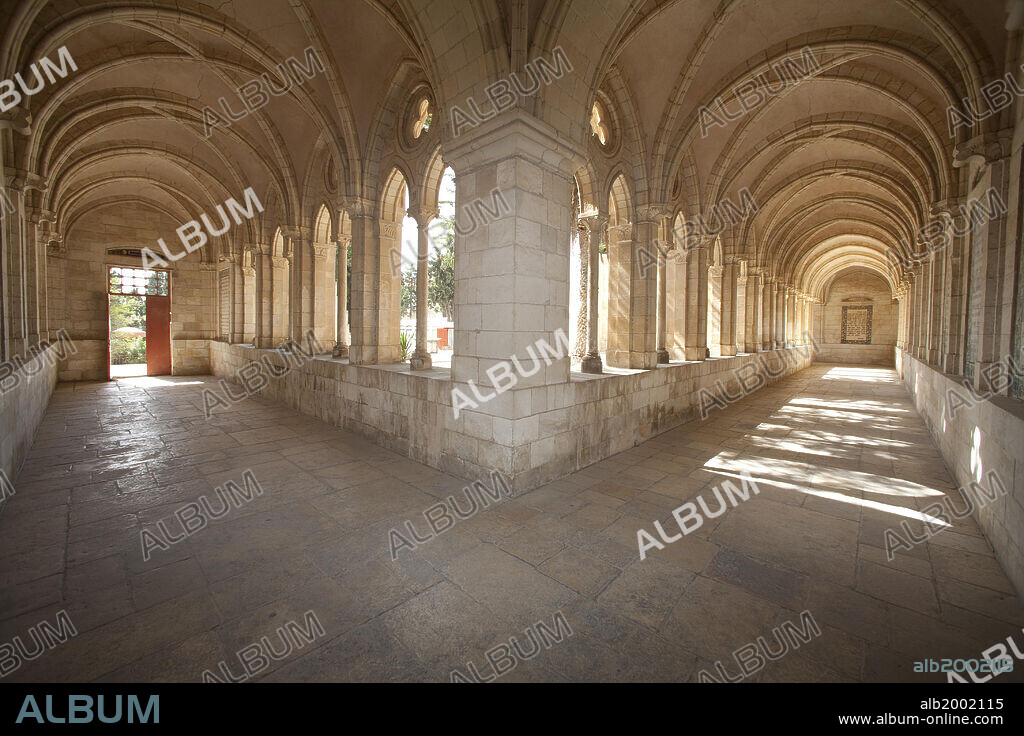alb2002115
Israel, Jerusalem, Pater Noster ('Our Father') Church and Convent, Cloister

|
Añadir a otro lightbox |
|
Añadir a otro lightbox |



¿Ya tienes cuenta? Iniciar sesión
¿No tienes cuenta? Regístrate
Compra esta imagen.
Selecciona el uso:

Título:
Israel, Jerusalem, Pater Noster ('Our Father') Church and Convent, Cloister
Descripción:
Ver traducción automática
Today, a convent belonging to the Carmelite Cloistered Sisters is located at the site of the ruins of the Byzantine Eleona Basilica. The original church was built over a cave in which Jesus was said to have taught the disciples the "Our Father" prayer. Luke 11: 2: "And he said unto them, When ye pray, say, Our Father which art in heaven, Hallowed be thy name". The first church was built in the 4th Century by Constantine's mother, Queen Helena and was later destroyed during the Persian invasion of 614. The crusaders rebuilt parts of it in 1099 and renamed it Paternoster. In 1152 a small new church was rebuilt by the Danish brothers from Jutland. The current building was built in the 19th century by Bossi Aurelia, Princess de la Tour d'Auvergne. The architect Viollet-le-Duc based his design of the church on the model of the Campo Santo cemetery at Pisa The walls of the cloister and church are covered with the prayer in many major languages.
Crédito:
Album / Sites and Photos
Autorizaciones:
Modelo: No - Propiedad: No
¿Preguntas relacionadas con los derechos?
¿Preguntas relacionadas con los derechos?
Tamaño imagen:
4368 x 2912 px | 36.4 MB
Tamaño impresión:
37.0 x 24.7 cm | 14.6 x 9.7 in (300 dpi)
Palabras clave:
ARCHITECTURAL • ARCHITECTURE • ARQUITECTONICA • ARQUITECTONICO • ARQUITECTURA • BARRIO ANTIGUO • BEIGE • BOVEDA • CAPITALES, LAS • CASCO ANTIGUO • CASCO HISTORICO • CASCO VIEJO • CATOLICISMO • CHRISTIANITY • CHURCH • CIUDAD ANTIGUA • CIUDAD VIEJA • CLAUSTRO • COLUMNA • COLUMNAS • CONVENTO • CRISTIANDAD • CRISTIANISMO • CRISTIANSMO • DAVID • ESQUINA • ESTILO GOTICO • ESTRUCTURA DE EDIFICIO • GETSEMANI • HORIZONTAL • HORIZONTALES • HUERTO DE LOS OLIVOS • IGLESIA • INSIDE • INTERIOR • INTERNO • ISRAEL • JERUSALEN • LUGAR DE CULTO • MARRON • MONTE DE LOS OLIVOS • NUEVO TESTAMENTO • ORACION • PARED DE LADRILLO • PILAR • PUERTA • PUNTO DE FUGA • RELIGION • S. XIX • SIGLO XIX • SIN GENTE • SOMBRA • TECHO • VENTANA • VENTANAS
 Pinterest
Pinterest Twitter
Twitter Facebook
Facebook Copiar enlace
Copiar enlace Email
Email
